
Theodore Robert Bundy was an American serial killer who kidnapped, raped, and murdered dozens of young women and girls during the 1970s and possibly earlier. After more than a decade of denials, he confessed to 30 murders committed in seven states between 1974 and 1978. Bundy's true victim total is unknown.

Cards on the Table is a detective fiction novel by the English author Agatha Christie, first published in the UK by the Collins Crime Club on 2 November 1936 and in the US by Dodd, Mead and Company the following year. The UK edition retailed at seven shillings and sixpence (7/6) and the US edition at $2.00.
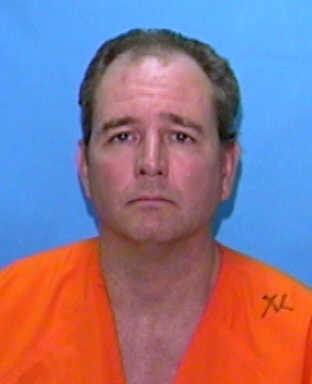
Daniel "Danny" Harold Rolling, known as the Gainesville Ripper, was an American serial killer who murdered five college students in Gainesville, Florida over four days in August 1990.

Cary Anthony Stayner, also known as the Yosemite Park Killer or the Yosemite Killer, is an American serial killer and the older brother of kidnapping victim Steven Stayner. He was convicted of the murders of four women between February and July 1999. The murders occurred in Mariposa County, California, near Yosemite National Park. Stayner was sentenced to death for the four murders and is still on death row at San Quentin State Prison.

Third Girl is a work of detective fiction by Agatha Christie and first published in the UK by the Collins Crime Club in November 1966 and in the US by Dodd, Mead and Company the following year. The UK edition retailed at eighteen shillings (18/-) and the US edition at $4.50.
Rachel Jane Nickell was a British woman who was stabbed to death on Wimbledon Common in south-west London on 15 July 1992. The initial police investigation of the crime resulted in the arrest in controversial circumstances of an innocent man, who was acquitted. Her killer, Robert Napper, was identified by a later police investigation and convicted in 2008.

Christopher Bernard Wilder, also known as the Beauty Queen Killer and the Snapshot Killer, was an Australian-American serial killer who abducted at least twelve young women and girls, killing eight of them during a six-week, cross-country crime spree in the United States in early 1984. Wilder's series of murders began in Florida on February 26, 1984, and continued across the country through Texas, Oklahoma, Colorado, Nevada and California, with attempted abductions in Washington and New York. Wilder victimized attractive young women, most of whom he would entice by promising to take their pictures. After subduing them, he would torture and rape them before shooting, stabbing with a knife, or strangling them to death. Two or more of his victims were electrocuted using a makeshift electrical cord.

Sleepless is a 2001 Italian giallo film directed by Dario Argento. The film stars Max von Sydow and Stefano Dionisi and marks Argento's return to the giallo subgenre. The film was another box office success when it opened in Italy, taking in over 5,019,733,505 lira by the end of its theatrical run.
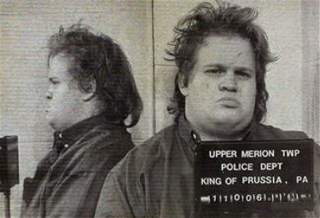
Caleb Fairley is an American murderer from Gulph Mills, Pennsylvania. In September 1995, Fairley murdered Lisa Marie Manderach, aged 29, and her 18-month-old daughter Devon, when the two visited Fairley's mother's Collegeville, Pennsylvania, children's clothing store in which he worked.
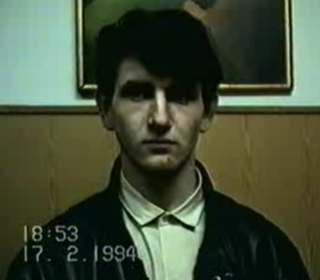
Alexander Nikolaevich Tchayka is a Ukrainian spree killer, also known as The Fur Coat Hunter, convicted of the killing of 4 women in Moscow over a two-week period in early 1994.

The Keddie murders are an unsolved quadruple homicide that occurred over the night of April 11–12, 1981 in Keddie, California, United States. The victims were Glenna Susan "Sue" Sharp, daughter Tina Louise Sharp, son John Steven Sharp and John's friend Dana Hall Wingate.

The Dnepropetrovsk maniacs are Ukrainian serial killers responsible for a string of murders in Dnepropetrovsk (Dnipropetrovsk) in June and July 2007. The case gained additional notoriety because the killers made video recordings of some of the murders, with one of the videos leaking to the Internet. Two 19‑year-olds, Viktor Sayenko, born 1 March 1988, and Igor Suprunyuk, born 20 April 1988, were arrested and charged with 21 murders.

Lindsay Jo Rimer was a 13-year-old British girl from Hebden Bridge, West Yorkshire who disappeared on the evening of 7 November 1994. The following year, her body was found in the Rochdale Canal outside the town; she had been strangled.
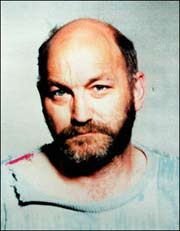
Robert Black was a Scottish serial killer and paedophile who was convicted of the kidnap, rape and murder of four girls aged between 5 and 11 in a series of crimes committed between 1981 and 1986 in the United Kingdom.
The Flat-Tire murders were a series of unsolved murders in Broward and Miami-Dade Counties, Florida, occurring between February 1975 and January 1976. The name originated from the investigators' belief that, when the offender committed two of the murders, he had deflated the tires of the victims' cars. The list of suspected victims ultimately included twelve girls and women whose bodies were discovered in or near South Florida canals. The murders were the subject of a 2021 book entitled The Flat Tire Murders: Unsolved Crimes of a South Florida Serial Killer.
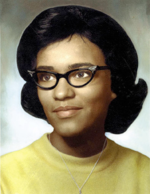
Carol Jenkins was an African-American woman who was murdered on September 16, 1968, by two white men in a sundown town in Indiana. Her murder remained unsolved for over thirty years until a tip led investigators to one of her alleged killers in the early 2000s. Her alleged killer, Kenneth Clay Richmond, who was affiliated with the Ku Klux Klan, was declared incompetent to stand trial and died of bladder cancer in 2002. His accomplice was never identified

The I-70 killer is an unidentified American serial killer who is known to have killed six store clerks in the Midwest in the spring of 1992. His nickname derives from the fact that several of the stores in which his victims worked were located a few miles off of Interstate 70.
Charles Thurman Sinclair, also known as the Coin Shop Killer, was an American criminal suspected of various murders of coin shop owners between the early 1980s and the 1990s. He was categorized as a nomadic killer who was linked to murders across the western United States and Canada.
Linwood Earl Forte, known as The Nightstalker, is an American serial killer and rapist who was linked via DNA to a series of rapes and murders committed in Goldsboro, North Carolina in 1990, and is the prime suspect in an unrelated murder in 1994. He was convicted of his confirmed crimes and subsequently sentenced to death, and is currently awaiting execution.
Juan Rodriguez Chavez, known as The Thrill Killer, was an American serial killer and spree killer who, together with a teenage accomplice, killed eleven people in Dallas, Texas during a crime spree lasting from March to July 1995, shortly after being paroled from prison for a murder conviction. For the latter crimes, Chavez was sentenced to death and subsequently executed in 2003.














